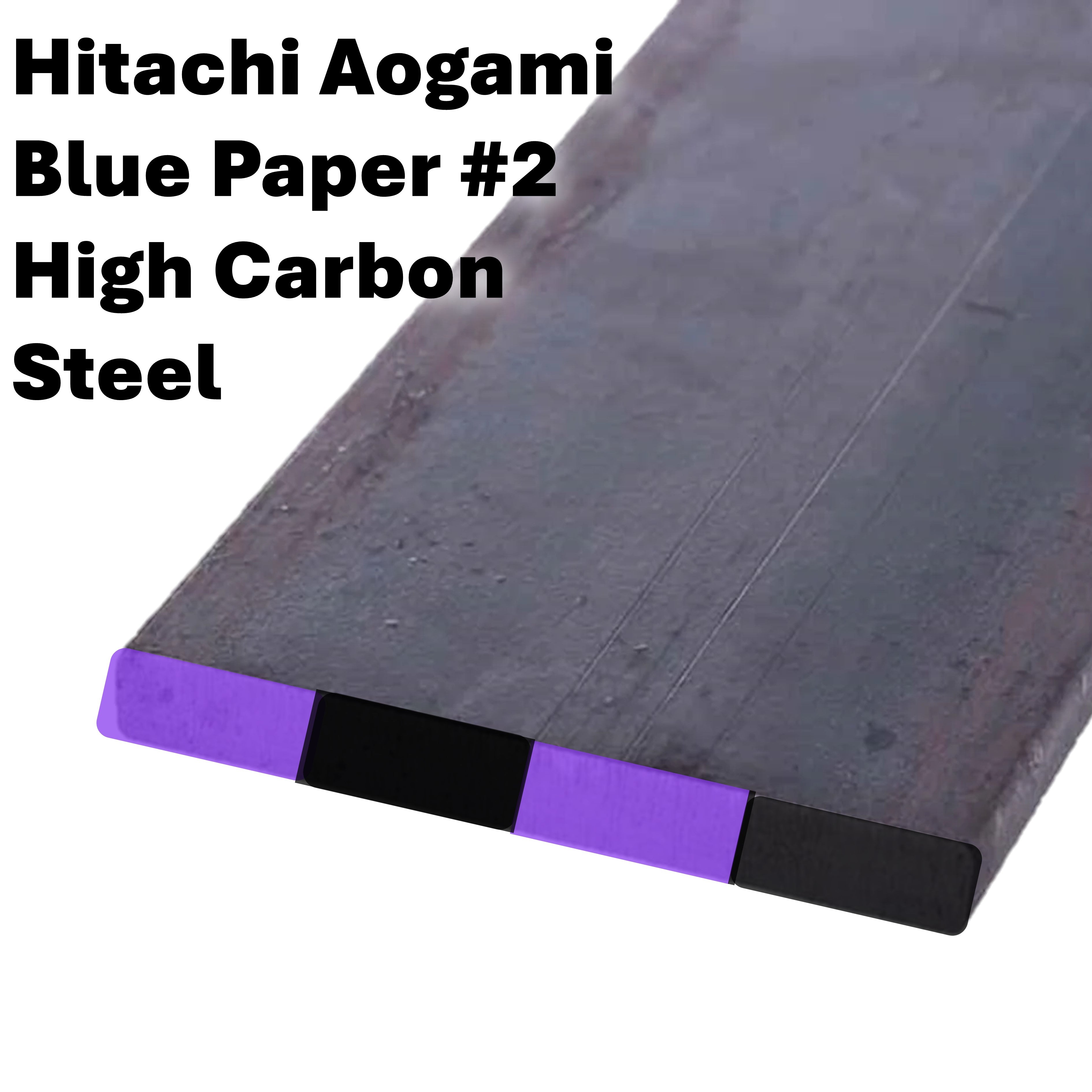Hitachi Aogami Blue Paper #2 - High Carbon Steel Flat Bars
This steel is manufactured in Japan by Hitachi Metals and is supplied annealed. It has a smooth surface and is soft in its annealed state, making it easy to cut, grind, drill, and file. Thickness may vary slightly from batch to batch.
Aogami Blue Paper #2 High Carbon Steel, commonly referred to as Blue #2, is a high-carbon steel designed for excellent edge retention, sharpness, and toughness. It is one of the most popular steels used in traditional Japanese knives, tools, and blades. The addition of tungsten and chromium helps improve wear resistance and edge stability while maintaining excellent sharpening properties. Blue Paper #2 is prized for its ability to take a razor-sharp edge and hold it through hard use, making it ideal for fine cutting tools, kitchen knives, and woodworking blades.
While not stainless, this steel can achieve a very high hardness, offering an optimal balance of performance for professional-grade blades.
Composition
- Carbon – 1.00-1.20%
- Chromium – 0.20-0.50%
- Manganese – 0.20-0.30%
- Tungsten – 1.00-1.50%
- Phosphorus – 0.025% max
- Sulfur – 0.004% max
- Iron – Balance
Performance Characteristics
-
Toughness 7/10 – Aogami Blue Paper #2 offers very good toughness for a high-carbon steel, especially when heat-treated correctly. It performs well in a variety of cutting tools and blades that require a combination of hardness and durability. It is slightly tougher than its sister steel, White Paper Steel, due to the added alloying elements.
-
Edge retention 8/10 – Blue Paper #2 is highly regarded for its superior edge retention, holding a razor-sharp edge even through hard or extended use. It performs exceptionally well in tools requiring precise, fine cutting, and is favored for its ability to maintain sharpness over time. It holds an edge better than simpler high-carbon steels due to the added tungsten and chromium.
-
Corrosion resistance 2/10 – As with most high-carbon steels, Aogami Blue Paper #2 is prone to rust and corrosion. It requires diligent care, such as oiling and drying after use, especially in wet or humid environments. It is not stainless, so regular maintenance is essential to prevent rusting.
Recommended Heat Treatment
- Heat blade to 760-820°C (non-magnetic stage)
-
Quench in water or oil, depending on desired hardness and risk tolerance for cracking (water will give maximum hardness, but oil is safer for preventing cracking)
- Temper at 150-200°C for 1-2 hours, twice, depending on the desired hardness
Note: Blue Paper #2 responds well to differential hardening, making it a popular choice for blades that require a harder edge and a softer, tougher spine. Traditional Japanese heat treatment techniques often exploit this capability to produce blades with both durability and cutting performance.
Approximate As-Quenched Hardness Before Tempering:
- 760-820°C followed by water quench – 64-65HRC
- 760-820°C followed by oil quench – 62-64HRC
Recommended Working Hardness
60-64HRC
















